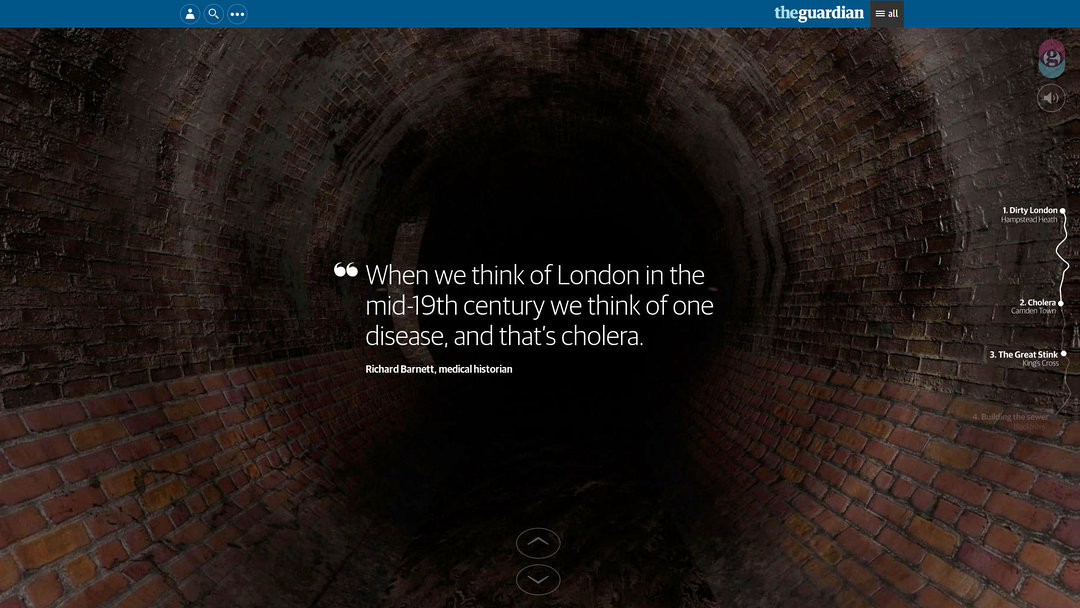Underworld VR: Subterranean London
The Challenge
In "Underworld VR," our objective at The Guardian was to create an immersive virtual reality experience, taking users on a journey through London's historic and intricate sewer system. This project aimed to redefine digital journalism by merging virtual reality technology with urban exploration and historical storytelling.
The Solution
Part 1: The VR Experience
As The Guardian's creative technologist for our second virtual reality project, "Underworld VR," my role involved close collaboration with the external production company, The Mill. I managed the technical elements of the project, utilising Google's Daydream VR technology to bring this subterranean world to life.
"Underworld VR" was crafted to maximise the Daydream controller's capabilities, providing users with an interactive tool—a virtual torch—to explore the London sewers. This interactive feature deepened the immersion, allowing users to directly engage with the environment and discover the secrets of London's underground in a unique and captivating way.
Part 2: The Interactive Website
To complement the VR experience, I developed an interactive website in-house. This site offered a blend of audio interviews, animations, and historical images, creating a multi-sensory digital journey into London's hidden underbelly. It was more than just a promotional tool; it served as an integral part of the VR experience, offering a different but equally compelling perspective on the narrative.

The "Underworld" interactive site used an advanced animation system that synchronised spoken audio with on-screen text, guiding users through the narrative and enhancing their understanding of London's sewer system.